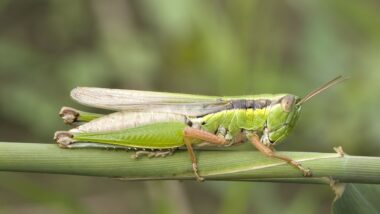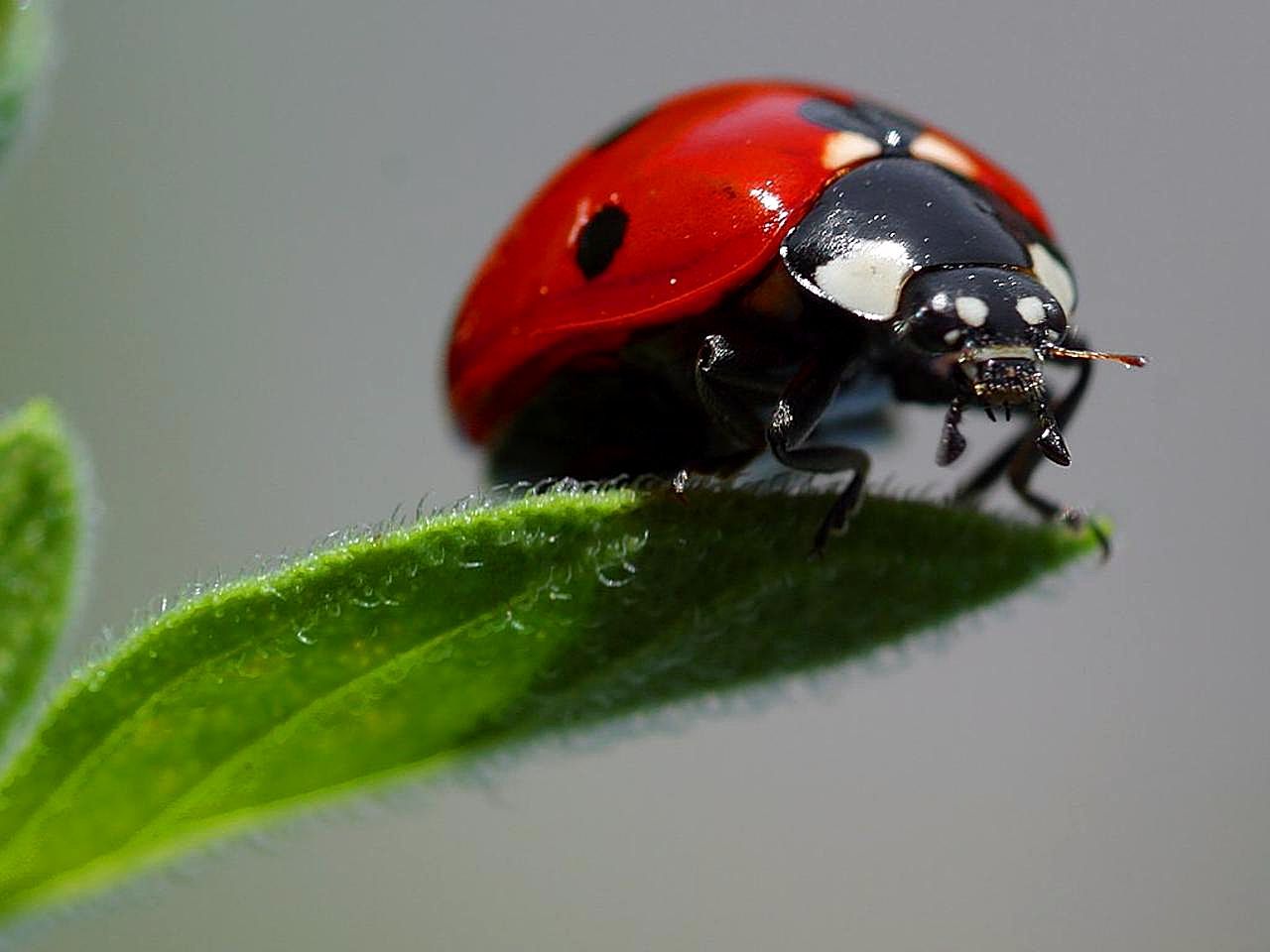
Ladybugs (AKA ladybirds) are very colorful and small beetles. They prove themselves to be very useful to gardeners due to their voracious appetite for unwanted garden pests. Most people think of ladybugs as red insects with black spots, but there are, in fact, over 6,000 species of ladybug species worldwide! There is more to these dainty little bugs than meets the eye. So prepare to learn more some amazing facts about ladybugs and how fascinating they are!
What Are Ladybugs?
Ladybugs are insects that belong to the family Coccinellidae. The name coccinellids is derived from the Latin word coccineus meaning “scarlet”. This is a pretty accurate description of ladybugs, though they do come in a range of different colors. Their colors range from red with black spots, black with red spots, red with no spots, or even stripes! One common thing that ladybugs all share is a dome-shaped spherical body and 6 legs. These beetles are often seen as signs of good luck and fortune. Despite their rotund-looking appearance, they are very fast walkers and fliers. Besides just flying to elude predators, they also can release a foul-smelling liquid that will discourage predators from eating them. Predators will usually not bother them since their bright red color is enough of a warning to let hunters know they are toxic.
Where Do Ladybugs Live?

Ladybugs live on every continent except Antarctica. They can be found in However, it is not as simple as it appears. Many ladybug species are endemic to certain regions and are under attack…by other ladybug species. For example, the Asian ladybug is becoming an issue for other native ladybug species in North America. They will eat the eggs and larvae of native ladybug species, as well as pass on foreign diseases to the native population. So, ladybugs live on every continent, but some species are endemic to particular regions and aren’t found anywhere else. This is why it is important to try to preserve them and protect them from outside dangers.
Ladybug Lifecycle
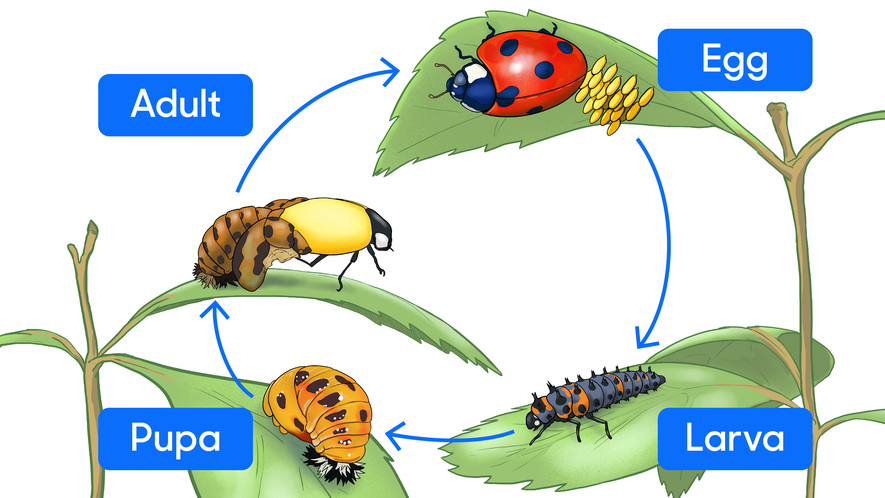
Ladybugs live an average of 1 year. A male and female ladybug will mate. Then, shortly after, a female will lay a clutch of small, yellow eggs on a plant or underside of a leaf. Some of the eggs may be unfertilized and be used as a source of food for the other fertilized eggs once they hatch. A female ladybug can lay over 4,000 eggs in its lifetime.
A ladybug’s lifecycle has four stages: egg, larva, pupa, then an adult. Eggs can take about a week to hatch. The ladybug larva, which looks like a spiky caterpillar with legs, will remain a larva for about 2-3 weeks (molting a few times as well) before turning into a pupa. A ladybug pupa will attach itself to a surface, hunch over, and its legs will fuse to its body. This will make it immobile and only be able to move its head if it is agitated. It will remain a pupa for another 2-3 weeks before it hatches out of its old pupa skin and is a full-grown ladybug.
What Do Ladybugs Eat?
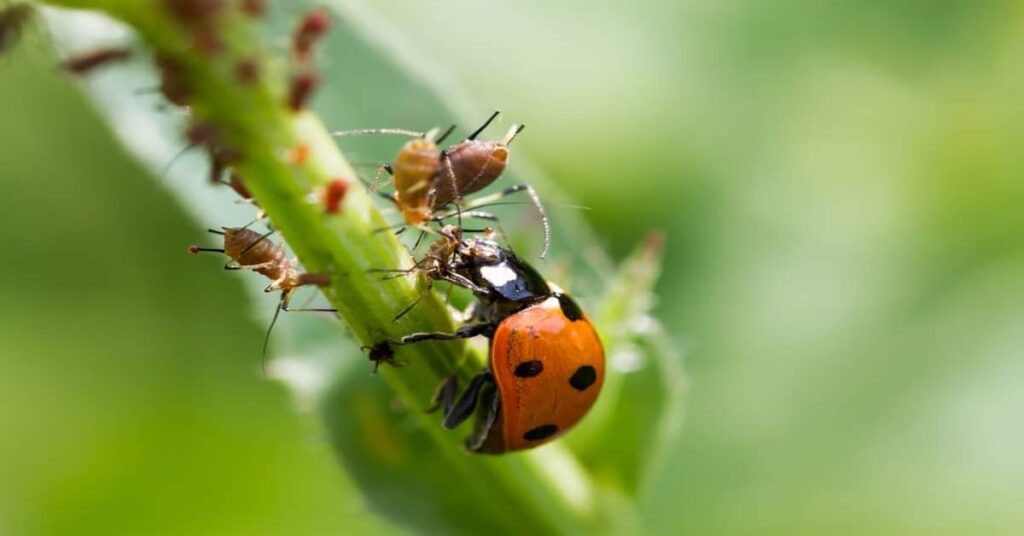
Ladybugs are voracious predators and will eat small insects, especially aphids. They will eat any soft-bodied insects smaller than them like mites, mealybugs, and small spiders. Ladybugs are not picky insects, so they are not strictly carnivorous. Ladybugs will feed on leaves, various fruits, nectar, and even pollen.
My 5 Favorite Ladybug Species
There are over 6,000 ladybug species so I will list my top 5 favorites!
22-Spot Ladybird (Psyllobora vigintiduopunctata)

I think this bright beetle and its unique color really make it stand out amongst its other cousins.
Asian Ladybird
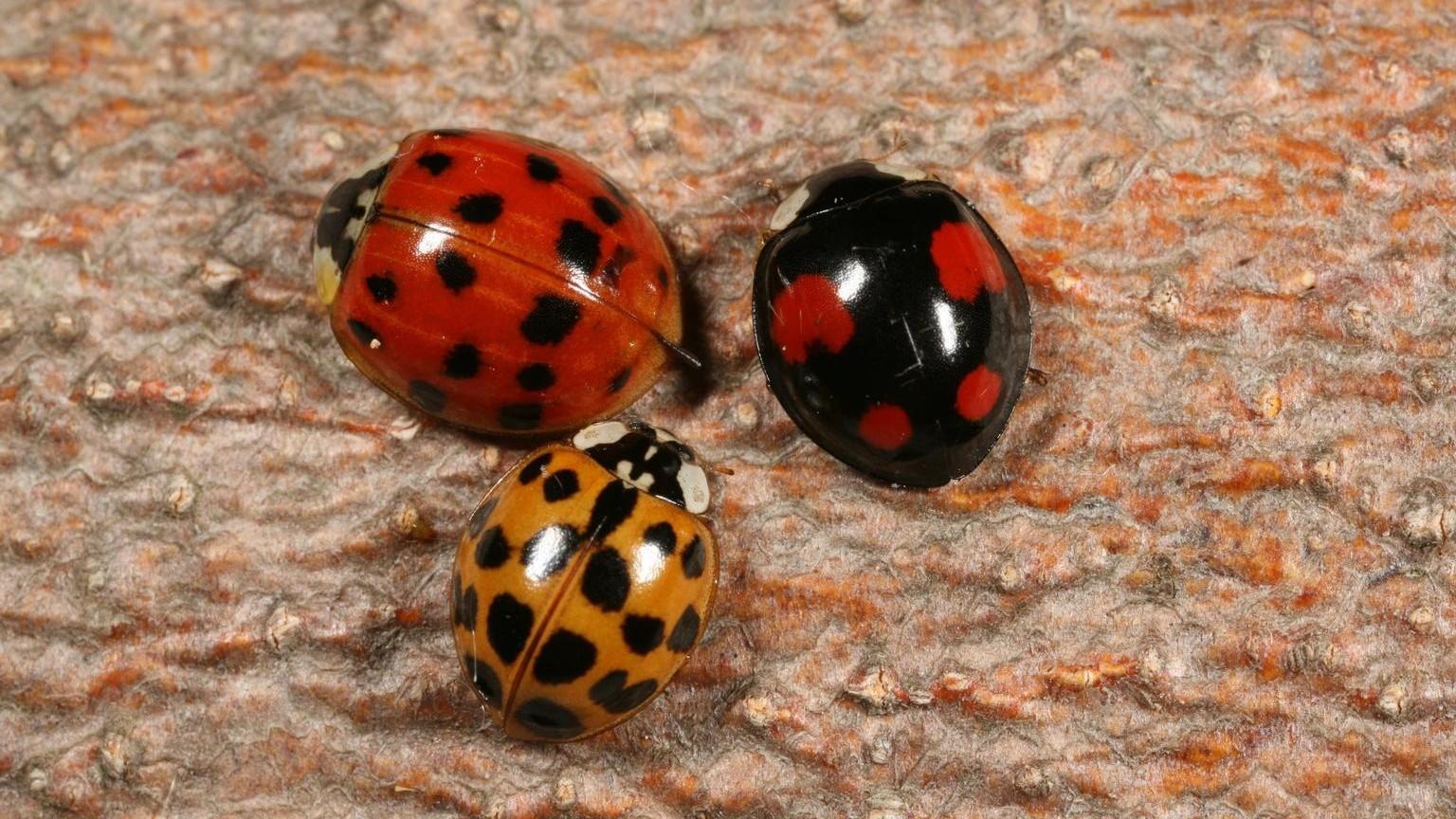
Even though it is an invasive species, I do admire how round and brightly colored it is. They can come in various different colors as well.
Eyed Ladybug

An appropriate name for this pretty little beetle. It has yellowish halos around its black spots as an extra fancy embellishment to its already impressive color palette.
Steelblue Ladybird

At first glance, it might not even look like a ladybug. I admire its shiny, metallic appearance and blueish color.
Fourteen Spotted Ladybird

This ladybug is yellow like the 22-Spot Ladybug except for the interesting pattern on its back. If you look at its pattern, it almost looks like it is smiling at you!
If you are interested in seeing more ladybug species, here is this article that will show you more. Ladybugs are a diverse species and now you know the variety of colors they can come in.
Top 12 Amazing Facts About Ladybugs
Learn these amazing facts about ladybugs that you might not know. I find them pretty cool and you might as well.
1. A ladybug’s wings can beat up and down between 80 and 90 times a second. Their hard shell covering (which is called an elytra) helps protect their wings, which are neatly folded underneath.
2. In its lifetime, a ladybug is capable of devouring over 5,000 aphids.
3. Ladybugs lay golden-colored eggs. However, ladybugs don’t seem to consider them as precious treasures considering that the mother (or other ladybugs) might come back to eat them.
4. Asian Ladybugs are known to devour Monarch Caterpillar eggs and larvae. They are also highly poisonous. In one case, a dog was taken to the vet because it was foaming at the mouth. The vet discovered the cause which was 30 Asian ladybugs had attached themselves to the roof of the dog’s mouth.
5. Ladybugs were named after the Virgin Mary. Germans call them “Marienkafer,” meaning “Mary beetles. Legends in Europe say that ladybugs saved farmers’ crops from pests when they prayed to the Virgin Mary to help them.
6. In Britain, ladybugs are also known as ‘bishops.’ Other variants include ‘the amazing bushy bishy barnabee’, ‘our lady’s bird’, ‘ladybird’, and also ‘lady beetle’.
7. Ladybugs can secrete a yellow fluid from their leg joints, known as “reflex bleeding.” This fluid has a foul taste and smell, deterring predators.
8. Ladybugs, unlike many insect species, will be able to survive wintry weather. They will gather in a large group and go into hibernation until the spring.
9. Ladybugs communicate with each other through chemical signals, which can include pheromones to attract mates or signal alarm.
10. Ladybugs can fall prey to parasitic wasps, which lay their eggs inside the ladybug’s body. The wasp larvae then consume the ladybug from the inside out.
11. In 1999, ladybugs were sent into space on the Space Shuttle Columbia to study how they catch aphids in microgravity. The experiment showed that ladybugs could still hunt effectively in space.
12. If their bright colors and reflex bleeding aren’t enough, ladybugs can also play dead. They will curl up and play possum to fool predators.
Conclusion
I hope that you enjoyed learning about ladybugs and the different kinds of forms they take. If you are interested in learning more about ladybugs, check out this page where I have free worksheets you can print out that are great for young kids.

